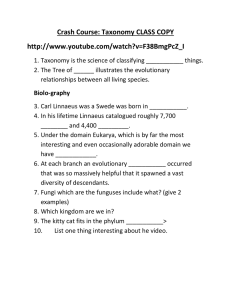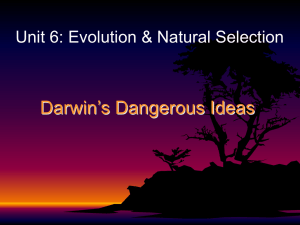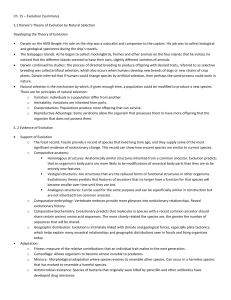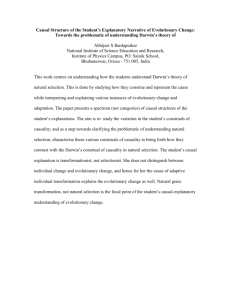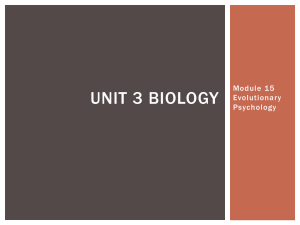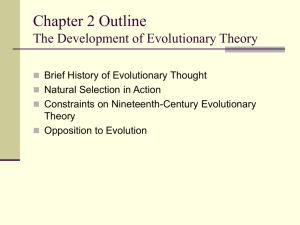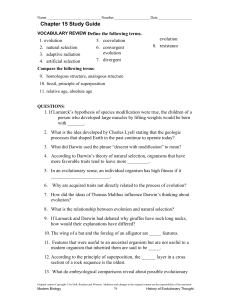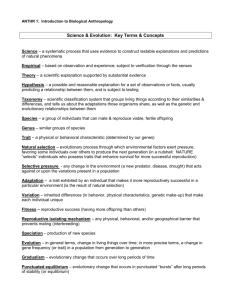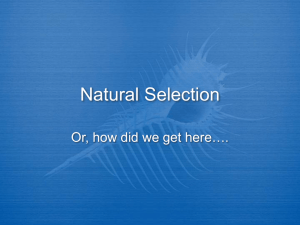Chapter 2 the Development of Evolutionary Theory
advertisement
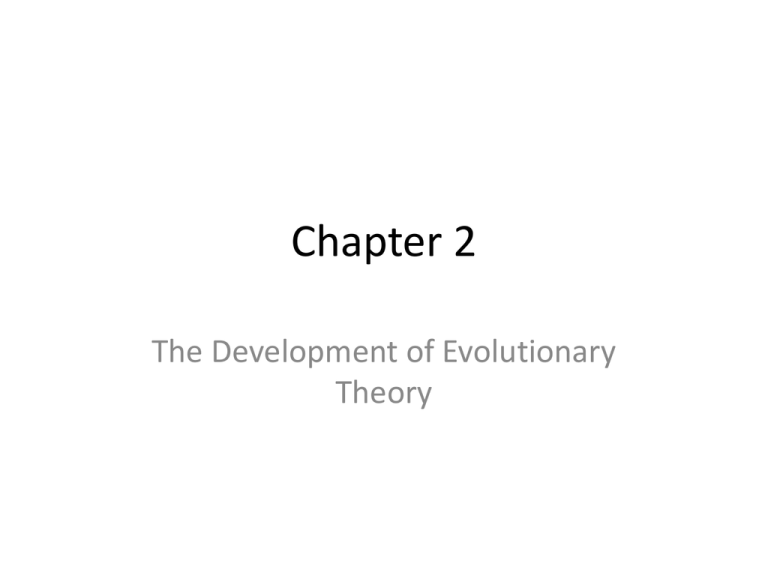
Chapter 2 The Development of Evolutionary Theory Evolution? • Brian Malow http://www.youtube.com/watch?v=Ohvh47v Tp34&feature=related Introduction to the Subject of Evolution • Evolution is the most fundamental of all biological processes, but one of the most misunderstood. • Humans evolved from a species that lived some 6-8 million years ago (mya), not monkeys or chimpanzees. Evolution takes time; hence, the appearance of a new species is rarely witnessed (microevolutionary changes occur, however: see Chapt. 1) The subject of evolution is controversial, especially in the U.S. because of conflicting spiritual teachings Evolution Is a Theory • The theory has been tested and subjected to verification through accumulated evidence (and has not been disproved) • The theory of evolution has been supported by a mounting body of genetic evidence. • The theory has stood the test of time. • The theory continues to grow. A Brief History of Evolutionary Thought • Evolutionary principles were developed in western Europe, made possible by scientific thinking dating to the 16th century. • Western science, however, borrowed ideas from Arab, Indian, and Chinese cultures where notions of biological evolution had already developed. • It was the theory that was new. Natural Selection Natural selection in the theory of evolution refers to genetic change or changes in the frequencies of certain traits in populations due to differential reproductive success between individuals. The most critical mechanism of evolutionary change, first explained by Charles Darwin Same conclusions were independently reached by Alfred Russel Wallace. A predominant feature of European worldview was, however, that all forms of nature never changed…. Fixity of Species • The notion that species, once created, can never change. • An idea opposed to theories of biological evolution. • To challenge the idea was to challenge the perfection of God’s design. The Scientific Revolution Came with the discovery of the New World, introducing new ideas and challenging fundamental views about the planet. Exposure to new plants and animals increased awareness of biological diversity. John Ray, a minister educated at Cambridge University, developed the concept of species. He recognized that groups of plants and animals could be differentiated from other groups by their ability to mate with one another and produce offspring. He placed such groups of reproductively isolated organisms into a single category, which he called the species. Carolus Linnaeus, a Swedish naturalist who developed a method of classifying plants and animals. In Systema Naturae, first published in 1735, he standardized Ray’s use of genus and species terminology and established the system of binomial nomenclature. He added two more categories: class and order. Linnaeus’ four-level system became the basis for taxonomy. Erasmus Darwin, Charles Darwin’s grandfather Physician, poet, and leading member of an intellectual community in England In a poem, expressed the view that life had originated in the seas and all species descended from a common ancestor. Charles read his grandfather’s writings, but how much he was influenced by them is unknown. Jean-Baptiste Lamarck developed a theory to explain the evolutionary process, known as the inheritance of acquired characteristics. An example is the giraffe: having stripped the leaves from the lower branches of a tree, the animal tries to reach leaves on upper branches. The neck becomes slightly longer. The longer neck is passed on to offspring. France

